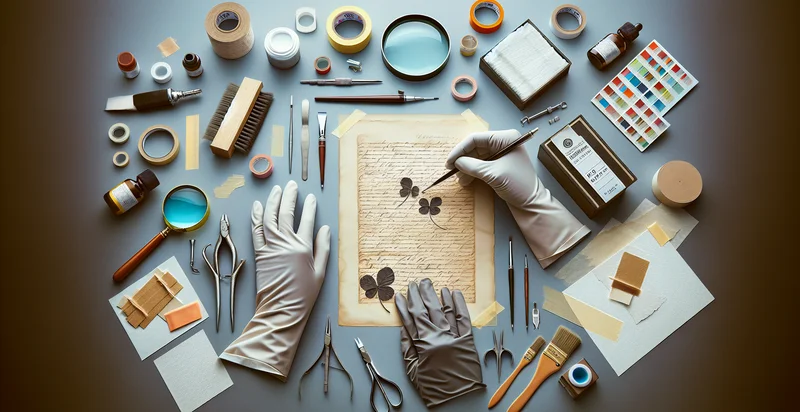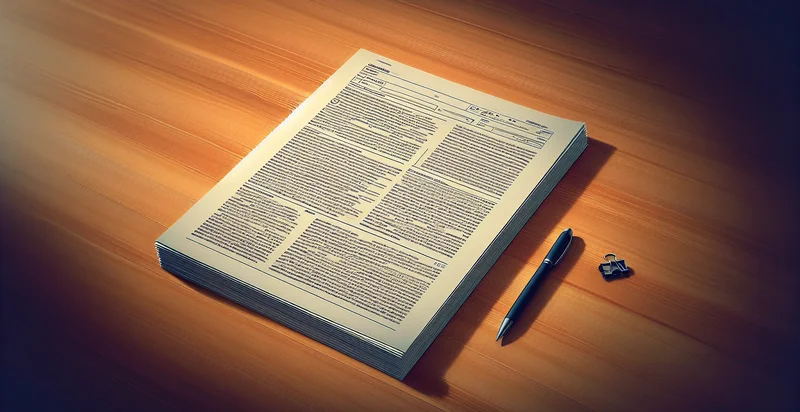Identify paper preservation
using AI
Below is a free classifier to identify paper preservation. Just upload your image, and our AI will predict what preservation technique is best suited for the type of paper - in just seconds.

Contact us for API access
Or, use Nyckel to build highly-accurate custom classifiers in just minutes. No PhD required.
Get started
import nyckel
credentials = nyckel.Credentials("YOUR_CLIENT_ID", "YOUR_CLIENT_SECRET")
nyckel.invoke("paper-preservation", "your_image_url", credentials)
fetch('https://www.nyckel.com/v1/functions/paper-preservation/invoke', {
method: 'POST',
headers: {
'Authorization': 'Bearer ' + 'YOUR_BEARER_TOKEN',
'Content-Type': 'application/json',
},
body: JSON.stringify(
{"data": "your_image_url"}
)
})
.then(response => response.json())
.then(data => console.log(data));
curl -X POST \
-H "Content-Type: application/json" \
-H "Authorization: Bearer YOUR_BEARER_TOKEN" \
-d '{"data": "your_image_url"}' \
https://www.nyckel.com/v1/functions/paper-preservation/invoke
How this classifier works
To start, upload your image. Our AI tool will then predict what preservation technique is best suited for the type of paper.
This pretrained image model uses a Nyckel-created dataset and has 28 labels, including Acidic Deterioration, Brittle Paper, Broken Binding, Crumpled, Damaged Corners, Discoloration, Fading, Foxing, Fraying and Ink Bleed.
We'll also show a confidence score (the higher the number, the more confident the AI model is around what preservation technique is best suited for the type of paper).
Whether you're just curious or building paper preservation detection into your application, we hope our classifier proves helpful.
Related Classifiers
Need to identify paper preservation at scale?
Get API or Zapier access to this classifier for free. It's perfect for:
- Archival Document Assessment: The paper preservation identifier can be used by museums and libraries to assess the condition of archival documents. This system can classify images of paper artifacts to determine if they are at risk of deterioration, thus guiding restoration efforts.
- Historical Manuscript Preservation: Publishers and academic institutions can utilize the function to identify the preservation status of historical manuscripts. By analyzing images of fragile texts, the identifier will help prioritize which manuscripts require immediate conservation action to prevent further damage.
- Digitization Quality Control: In digitization projects, the paper preservation identifier can be implemented to ensure that documents are in suitable condition for scanning. It helps to filter out unusable or deteriorating papers, thereby enhancing the quality of the digital archive.
- Art Conservation Strategy Development: Art conservationists can use this technology to analyze paintings or mixed media that include paper elements. The identifier can flag sections that may be vulnerable, allowing conservators to develop tailored preservation techniques.
- Antique Book Evaluation: Online booksellers and auction houses can employ this identifier to assess the condition of antique books before listing them for sale. By highlighting potential preservation issues, sellers can provide accurate condition reports to buyers, enhancing trust and transparency.
- Educational Tool for Preservation Courses: Educational institutions can adopt the paper preservation identifier in their curricula for courses on conservation and restoration. By using real case studies, students can engage with the technology and learn about the complexities of paper preservation.
- Disaster Recovery Planning: Organizations specializing in disaster recovery can leverage this identifier to evaluate the condition of paper records post-disaster. This assessment will allow recovery teams to prioritize their efforts on the most vulnerable items, ensuring efficient recovery processes.


